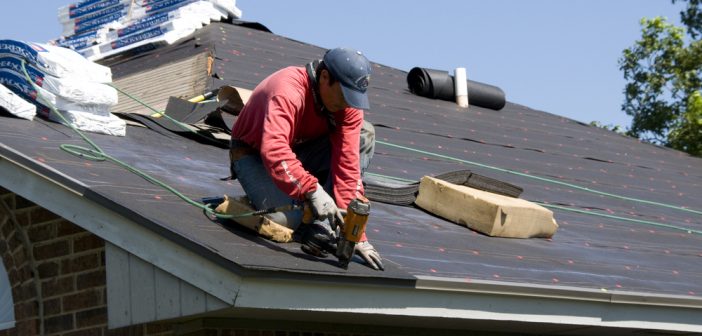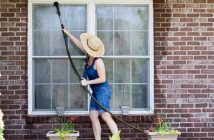A new roof is a costly endeavor that few homeowners look forward to. In fact, the national average cost of a roof replacement is roughly $22,000. With such high costs involved, it’s common to fear hearing the diagnosis that your home needs a new roof. While there is little that you can actually do to reduce the cost of replacing your roof, there are a few signs you can familiarize yourself with that indicate a roof replacement might be on the horizon for you and your home, so the initial diagnosis doesn’t come as quite a shock. Recognizing these indicators will help you be more financially prepared should the day arise that your roof needs replaced.

1. Algae
If you begin to notice several dark streaks or stains on your roof, it is likely algae, which can build up on the roof for quite some time. While algae isn’t an immediate sign that something is wrong with your roof, it isn’t very aesthetically pleasing. This issue is most common in areas that experience warm, humid winters. In most cases, algae can be effectively removed by spray washing the roof with a combination of water and bleach.
2. Buckled Shingles
Much like algae, buckled shingles are a bit of an eyesore on your roof. However, this issue is generally an indicator of a more complex problem than algae. In most cases, shingles buckle when hot air from the attic forces the shingles away from the home. This can also be a sign that the roof is not properly ventilated, which often takes several years off of the life expectancy of the roof and increases your home’s cool costs.
3. Granule Loss
While some loss of granules is a product of normal wear and tear from inclement weather, such as hail, Significant loss can be a sign that there is a bigger issue of concern. Granule loss not only weakens your roof but can also cause leaking, so it is important to address any loss, particularly if there is a storm on the horizon.
4. Mold
Unlike the previous indicators, mold is not an issue that appears on the outside of the home. Instead, you will need to inspect your attic to determine if there is any mold growth present. If you do find mold, it is likely that your roof is leaking. Additionally, the health risks of mold in your home are substantial. It’s important to keep in mind that mold is not always easy to detect, so a professional inspection might need to take place. If you do discover mold, it will need to be removed, and you may need to replace the roof to prevent mold from coming back.

5. Roof Rot
One of the most telltale signs that your roof is in disrepair is roof rot. This condition occurs when the roof is in significant decay. If left unaddressed, the consequences may stretch far beyond the roof and lead to damage in other parts of your home as water makes its way through the roof. If the rot is not seen or just ignored, it will not take long before water seeps through the roof and causes significant damage throughout the rest of your home.
6. Water Spots
If you notice interior water spots on your ceiling, it may also be a sign that your roof is in disrepair. These spots typically indicate that there is a leak in the roof, which may be difficult to pinpoint. It can be difficult to pinpoint where a leak originates because water does not always drip straight down, so it may be beneficial to hire a roofing contractor to locate and assess the issue.
7. Missing Shingles
Shingles missing from your rooftop can be an indicator of a couple of different issues. The misplaced shingles may be from a small animal getting on your roof, which is typically an easy fix. In this case, you’d want to look for tree branches that are close to or touching the roof and trim them back to remove the pathway for your furry friend. If that is not the case, though, it may mean that the sealant on the underside of your shingles is damaged or needs replaced. In either case, it’s important that you replace any missing shingles because shingles rely on an overlapping pattern to remain waterproof. If a missing shingle interrupts the pattern, you would likely be soon dealing with a leak into the house as well.
8. Cracking Shingles
Cracked shingles are another symptom of the same disease – old worn out shingles. Shingles often become cracked with the granules have worn off and the underlying material becomes brittle. In most cases, replacement is the only option. If your shingles shouldn’t be at the end of the lifespan yet, be sure to check with your manufacturer to see if the shingles are warrantied to determine if the replacement cost might be offset.
Most homeowners will believe that they need a new roof as soon as they spot a ceiling leak. While that might be the case, there are several other key indicators that can also single a roof repair or replacement might be in order. Being aware of some of the most common roof wear indicators will help you be more aware of your home’s repair needs so you won’t be surprised by a new roof diagnosis.








